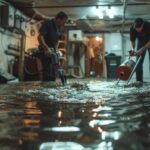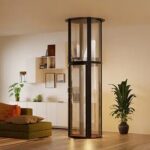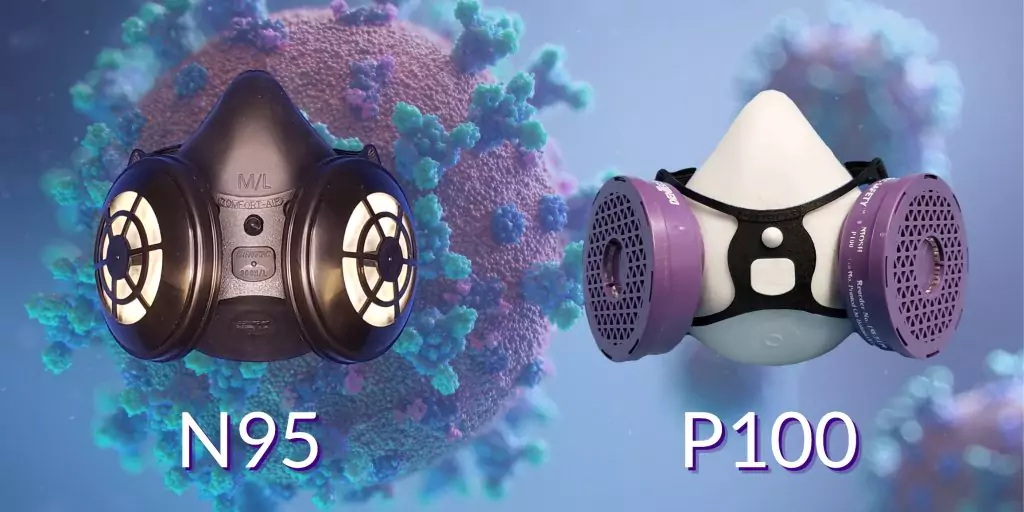When it comes to choosing the right respiratory protection, understanding the various respirator ratings is essential. Respirators are rated based on their ability to filter specific contaminants from the air, and each rating is designed for a particular type of hazard. N95 and P100 are among the most common respirator ratings, but there are many others with different specifications.
In this article, we’ll break down the differences between N95, P100, and other respirator ratings so that you can make an informed decision about the best protection for your work environment.
1. What Do Respirator Ratings Mean?
Respirator ratings are assigned by the National Institute for Occupational Safety and Health (NIOSH) and refer to a respirator’s ability to filter airborne particles. These ratings are typically a combination of a letter and a number, which together indicate the type of protection the respirator provides.
- The Letter: The letter in the rating refers to how resistant the respirator is to oil-based particles.
- N: Not resistant to oil.
- R: Somewhat resistant to oil.
- P: Strongly resistant to oil, or oil-proof.
- The Number: The number refers to the percentage of airborne particles the respirator can filter.
-
- 95: Filters out 95% of airborne particles.
- 99: Filters out 99% of airborne particles.
- 100: Filters out 99.97% of airborne particles (essentially equivalent to a HEPA filter).
For example, an N95 respirator (https://parcilsafety.com/collections/half-face-respirators) is not oil-resistant and filters out 95% of non-oil airborne particles, while a P100 respirator is oil-proof and filters out 99.97% of all airborne particles.
2. N95 Respirators: The Standard for Many Industries
N95 respirators are widely used across a range of industries, including construction, healthcare, and manufacturing. They are highly effective at filtering non-oil-based airborne particles, such as dust, pollen, and biological contaminants like bacteria and viruses.
N95 respirators are known for their high filtration efficiency and relatively comfortable fit, which makes them suitable for long-term wear in various work environments. However, they are not designed to provide protection from oil-based particles, so industries working with oils or lubricants may need a different type of respirator.
For tasks that expose workers to dust and non-oil particulate matter, N95 respirators are a reliable and cost-effective option.
3. P100 Respirators: Maximum Protection
If you need more comprehensive protection, especially in environments where oil-based particles are present, P100 respirators are an excellent choice. P100 respirators are oil-proof and provide the highest level of filtration efficiency, capturing 99.97% of airborne particles, including both oil-based and non-oil-based contaminants.
P100 respirators are commonly used in industries such as chemical manufacturing, welding, and painting, where workers are exposed to a wide range of hazardous substances, including fumes, vapors, and fine dust particles. Due to their higher level of protection, P100 respirators are ideal for tasks that involve exposure to toxic substances like asbestos, lead, or chemical mists.
For more information on how P100 respirators compare to other types of protection, you can read this guide to selecting the right respirator.
4. Other Respirator Ratings: R95 and N99
In addition to N95 and P100, there are other respirator ratings that cater to specific needs:
- R95 Respirators: These provide 95% filtration efficiency but are somewhat resistant to oil. They are suitable for environments where there is occasional exposure to oil-based particles.
- N99 Respirators: Similar to N95 respirators, N99 models provide a higher filtration efficiency, filtering out 99% of non-oil-based airborne particles. They are useful in environments where higher levels of dust or particulates are present.
Each respirator rating is designed to offer specific protection, so it’s important to choose one that matches the hazards present in your work environment.
5. Choosing the Right Respirator for Your Needs
When selecting a respirator, consider both the types of contaminants in your environment and the level of protection required. While N95 respirators are excellent for filtering out non-oil-based particles, industries dealing with oil-based hazards or more toxic substances may require P100 or R-rated respirators.
In addition to the respirator rating, make sure to consider the fit and comfort of the mask, as these factors affect its long-term usability. Many respirators are available in half-mask and full-face designs, offering varying levels of protection and comfort.
Conclusion
Understanding the differences between N95, P100, and other respirator ratings is crucial for ensuring workers are protected against the specific hazards in their environment. Whether you need an N95 for non-oil particulate matter or a P100 for more hazardous oil-based contaminants, choosing the right respirator can make a significant difference in workplace safety.
For more guidance on selecting the right respirator for your industry, check out this collection of half-face respirators.

 How to Choose the Right Window Replacement Contractor
How to Choose the Right Window Replacement Contractor  The Best Aircon servicing Singapore Maintaining Coolness by Performing Top-Quality Maintenance
The Best Aircon servicing Singapore Maintaining Coolness by Performing Top-Quality Maintenance  Why Columbus Homeowners Are Falling in Love with Epoxy Garage Floor Coatings
Why Columbus Homeowners Are Falling in Love with Epoxy Garage Floor Coatings  Flood Cleaning Services in Fort Worth, TX: Essential Steps to Restore Your Home
Flood Cleaning Services in Fort Worth, TX: Essential Steps to Restore Your Home  The Benefits of Caesarstone Quartz: Style, Strength, and Sustainability
The Benefits of Caesarstone Quartz: Style, Strength, and Sustainability  Are Home Elevators Worth the Investment? A Canadian Homeowner’s Guide
Are Home Elevators Worth the Investment? A Canadian Homeowner’s Guide  5 Common Gutter Problems That Gutter Guards Can Solve
5 Common Gutter Problems That Gutter Guards Can Solve  How a Whole-House Humidifier Can Help With Your Health
How a Whole-House Humidifier Can Help With Your Health  Master Bathroom Remodeling: Essential Tips for a Stylish Upgrade
Master Bathroom Remodeling: Essential Tips for a Stylish Upgrade 